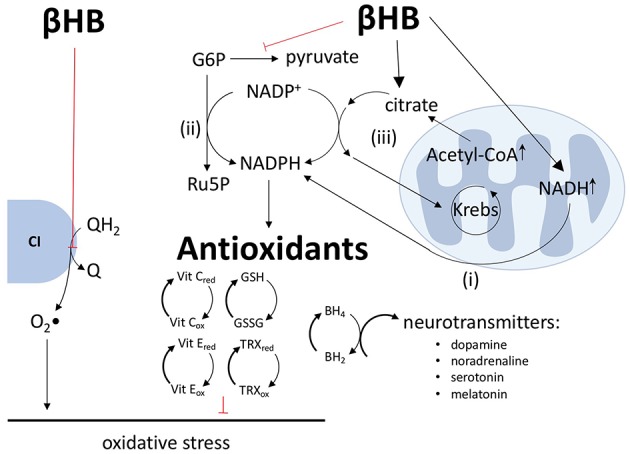Figure 3.

βHB decreases ROS production, increases antioxidant defenses, and increases neurotransmitter synthesis. βHB oxidizes the Q/QH2 couple to decrease the transfer of electrons from QH2 to oxygen by reverse electron transport at complex I (CI) and, thus, decrease the production of superoxide (O2•) radicals. βHB generates NADPH by (i) increasing the transfer of hydride ions from NADH to NADP+, (ii) inhibiting glycolysis, thus increasing pentose phosphate pathway flux, and (iii) increasing citrate-pyruvate and citrate-isocitrate cycle flux. NADPH, in turn, supports antioxidant defenses, including improving (reducing) the glutathione (GSH-GSSG), thioredoxin (TRX), and vitamins C and E reduced to oxidized ratios. NADPH reduces dihydrobiopterin (BH2) into tetrahydrobiopterin (BH4) and, thereby, increases the synthesis of the neurotransmitters dopamine, noradrenaline, serotonin, and melatonin.
